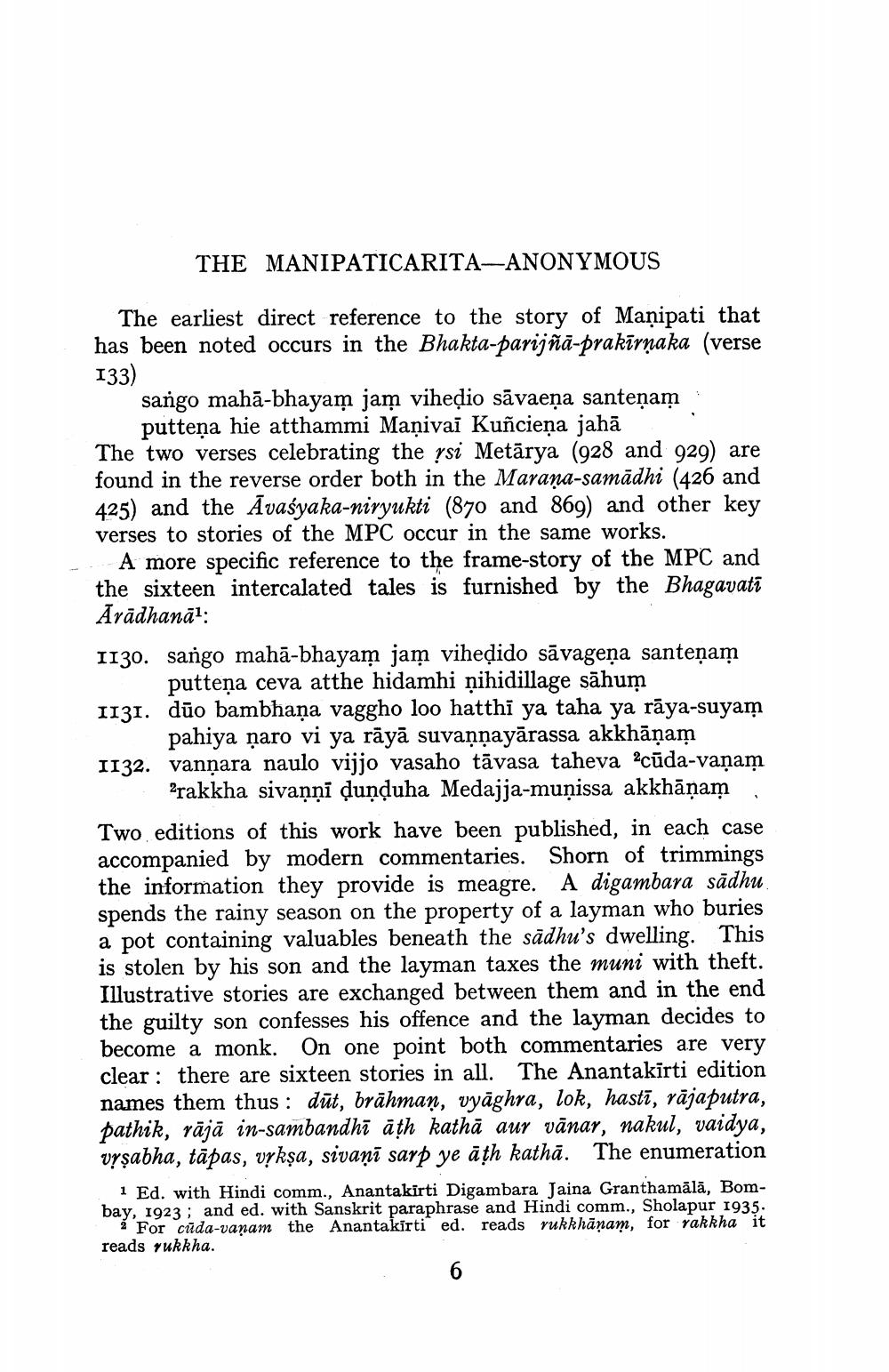________________
THE MANIPATICARITA-ANONYMOUS
The earliest direct reference to the story of Manipati that has been noted occurs in the Bhakta-parijñā-prakīrņaka (verse 133)
sango mahā-bhayam jam viheờio sāvaeņa santeņam
putteņa hie atthammi Maņivai Kuñcieņa jahā The two verses celebrating the ysi Metārya (928 and 929) are found in the reverse order both in the Marana-samādhi (426 and 425) and the Āvasyaka-niryukti (870 and 869) and other key verses to stories of the MPC occur in the same works.
A more specific reference to the frame-story of the MPC and the sixteen intercalated tales is furnished by the Bhagavatī Ārādhanāl: 1130. sango mahā-bhayam jam viheờido sāvageņa santeņam
putteņa ceva atthe hidamhi ņihidillage sāhum 1131. dūo bambhaņa vaggho loo hatthi ya taha ya rāya-suyam
pahiya şaro vi ya rāyā suvaņņayārassa akkhāņam 1132. vanṇara naulo vijjo vasaho tāvasa taheva ?cūda-vanam
Prakkha sivaņņī dunduha Medajja-muņissa akkhāņam Two editions of this work have been published, in each case accompanied by modern commentaries. Shorn of trimmings the information they provide is meagre. A digambara sādhu spends the rainy season on the property of a layman who buries a pot containing valuables beneath the sādhu's dwelling. This is stolen by his son and the layman taxes the muni with theft. Illustrative stories are exchanged between them and in the the guilty son confesses his offence and the layman decides to become a monk. On one point both commentaries are very clear: there are sixteen stories in all. The Anantakirti edition names them thus : dūt, brāhman, vyāghra, lok, hastī, rājaputra, pathik, rājā in-sambandhi āth kathā aur vānar, nakul, vaidya, vyşabha, tāpas, vykșa, sivaņā sarp ye āțh kathā. The enumeration
1 Ed. with Hindi comm., Anantakirti Digambara Jaina Granthamālā, Bombay, 1923; and ed. with Sanskrit paraphrase and Hindi comm., Sholapur 1935.
For cūda-vanam the Anantakirti ed. reads rukkhānam, for rakkha it reads rukkha.




